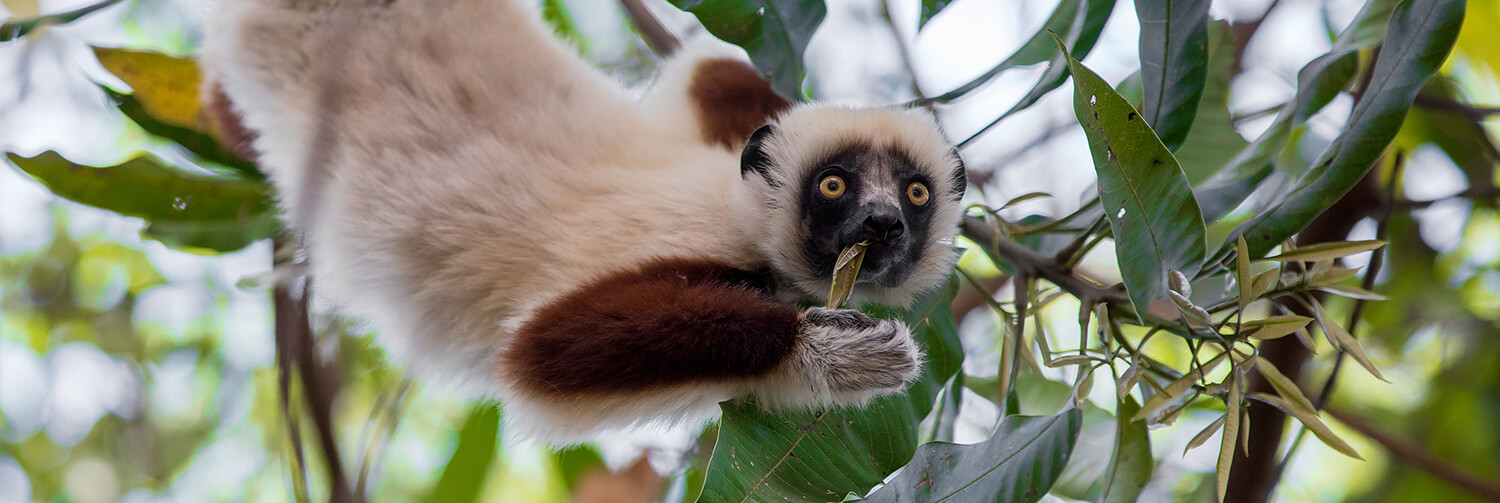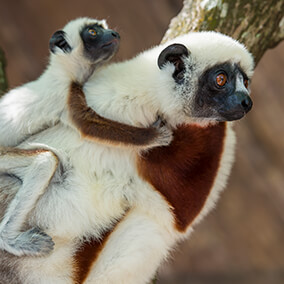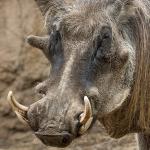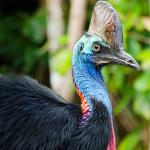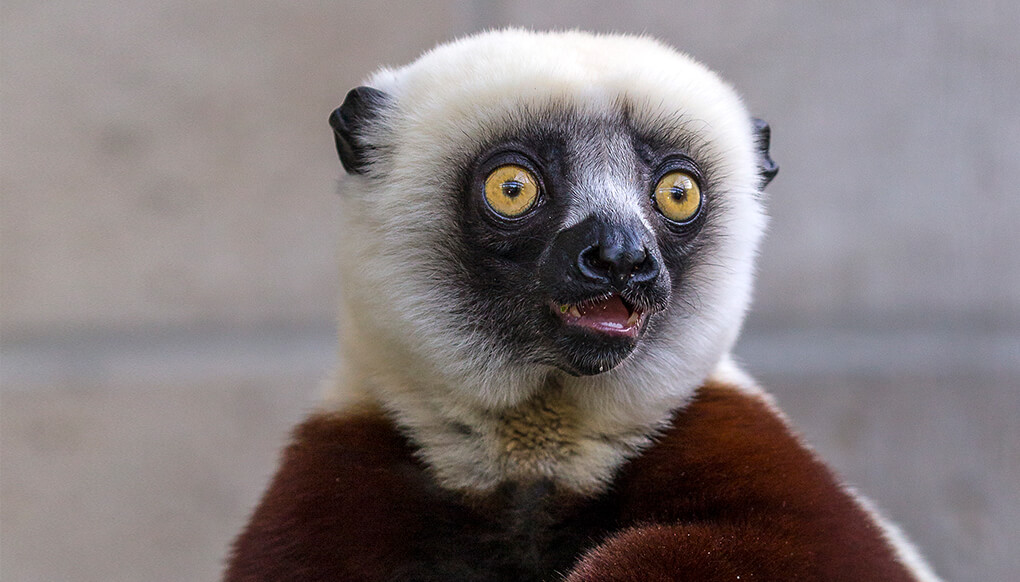
Coquerel's Sifaka

Mammals


Endangered
facts

The Coquerel's sifaka's body is about 16 to 19 inches in length, and the tail measures 20 to 24 inches. Adults weigh 8.2 to 9.5 pounds.

Leaves make up most of this sifaka's diet. They also eat flowers, fruit, bark, and dead wood.

description
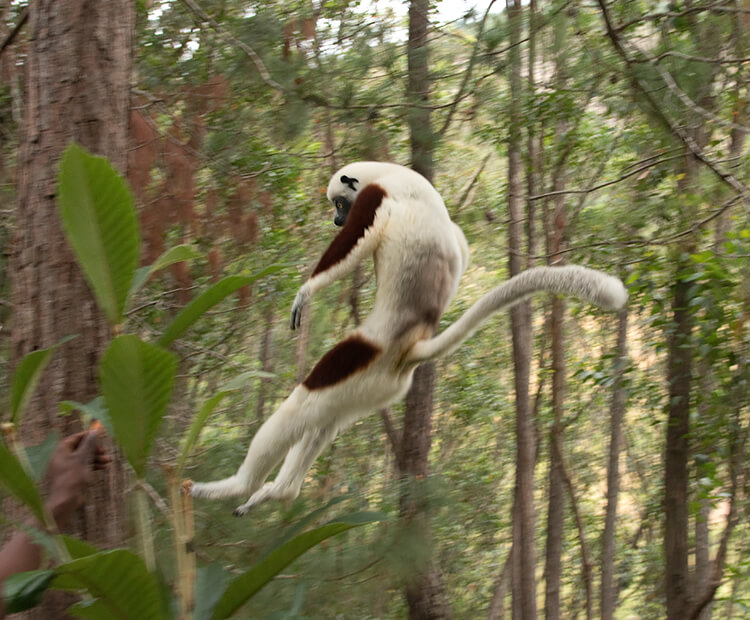
On the move
Whether moving through the trees or on the ground, Coquerel's sifaka are great jumpers. In fact, they can jump nearly 40 feet to move from one tree to another. On the ground they “dance,” holding their arms out and hopping like kangaroos.
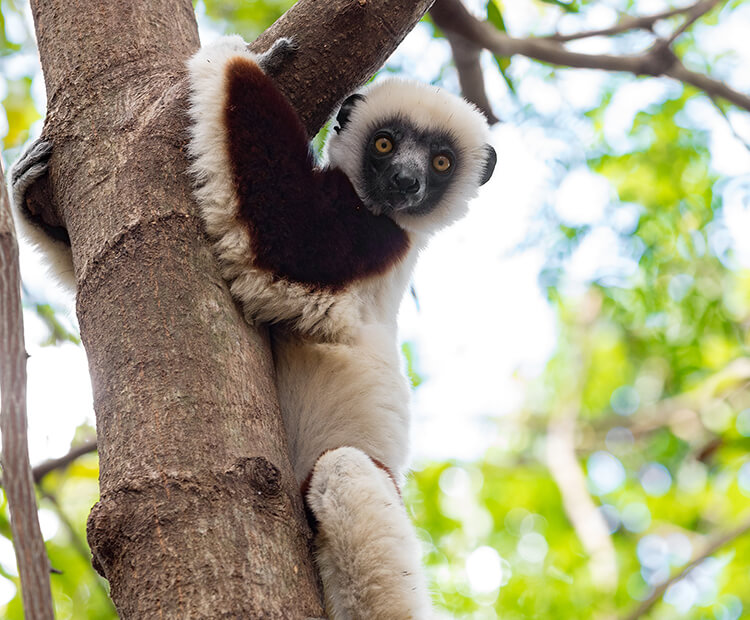
Safety in numbers
Living in trees on the island of Madagascar helps protect sifaka groups from predators that share their forest home. These lemurs can make a loud alarm call to warn their group of danger: “Shi-fakh! Shi-fakh! Shi-fakh!” That unique call is what gives sifaka their name.
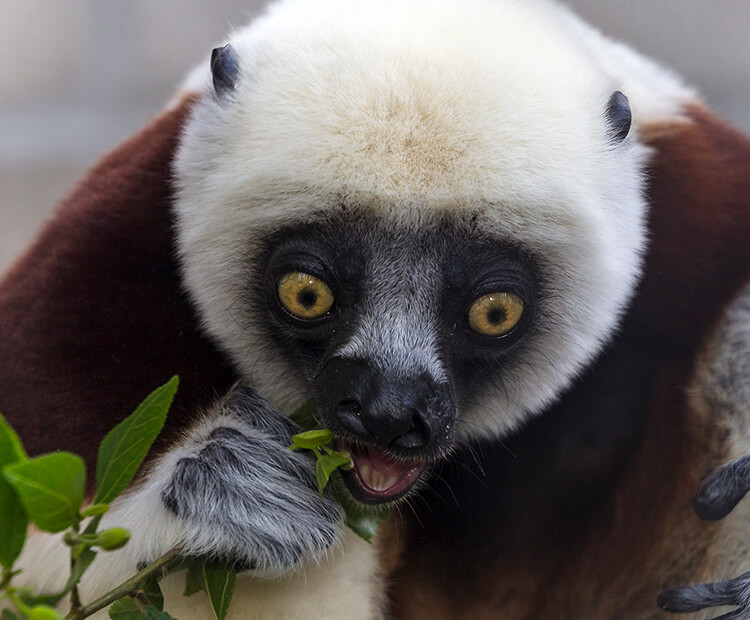
Up with the sun
Coquerel’s sifaka begin their daily activities at sunrise. They often sun themselves in the treetops before spending the rest of the day moving through the trees to find food.

